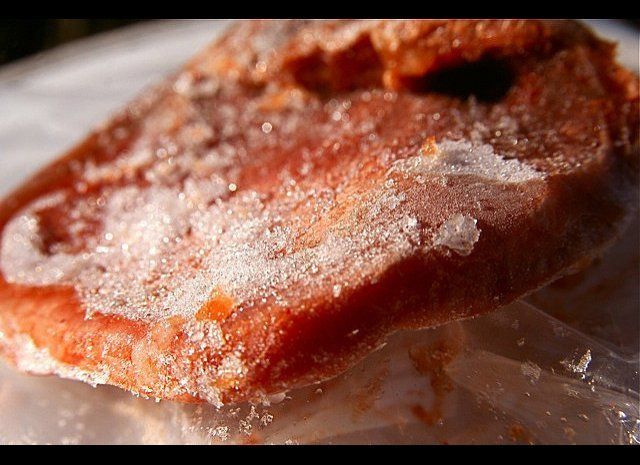There are many things in life we can't know with certainty -- like what's really in the In-N-Out Burger's secret sauce or why bacon milk shakes taste so good. But then there are those that, with a little bit of research, we can find answers to, like what is freezer burn and why does it happen?
Many of us have seen freezer burn. We've thrown out food because of it. Or have suffered a foul-smelling freezer at its hands. And now, we're going to find out what it is exactly and how to avoid it.
When you freeze foods, the water molecules turn into ice crystals. And in an effort for self-preservation, these molecules will naturally migrate to the coldest area they can find, which is normally close to the sides of the freezer. When the molecules migrate, the area they leave behind gets dehydrated (and if it's meat, you'll see dry, grayish spots). That is freezer burn.
As a side effect of freezer burn, oxygen molecules seep in where the water molecules once were. The oxygen can dull the color and change the flavor of your food. This is why food with freezer burn is no longer palatable -- even though it's still safe to eat.
So, how can you avoid this? Easy. Make sure you wrap your food properly. Don't leave your food in the freezer too long. (While the freezer does prolong the life of food, it does not do so indefinitely.) Lastly, have your freezer set at 0 degrees fahrenheit.
Now that you've gotten to the bottom of freezer burn, you can sit back, freeze some meat -- the right way -- and enjoy a bacon milk shake, while you ponder what makes In-N-Out's burger so damn tasty.
